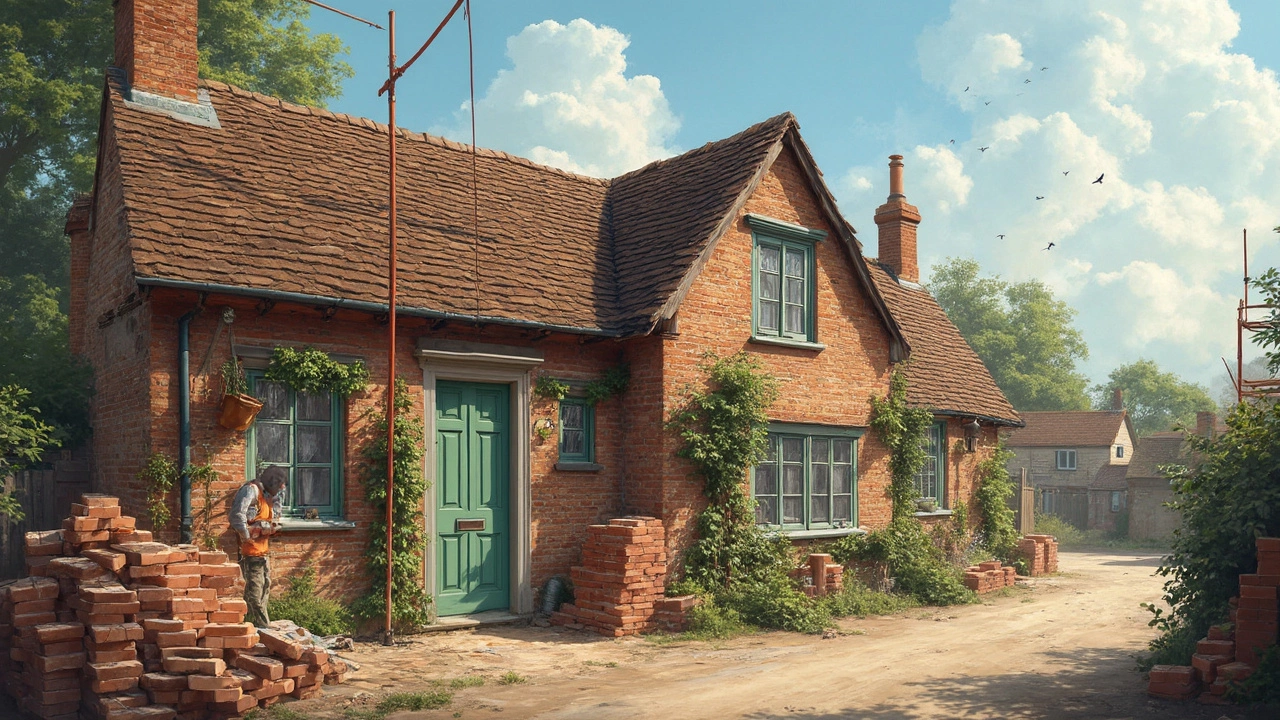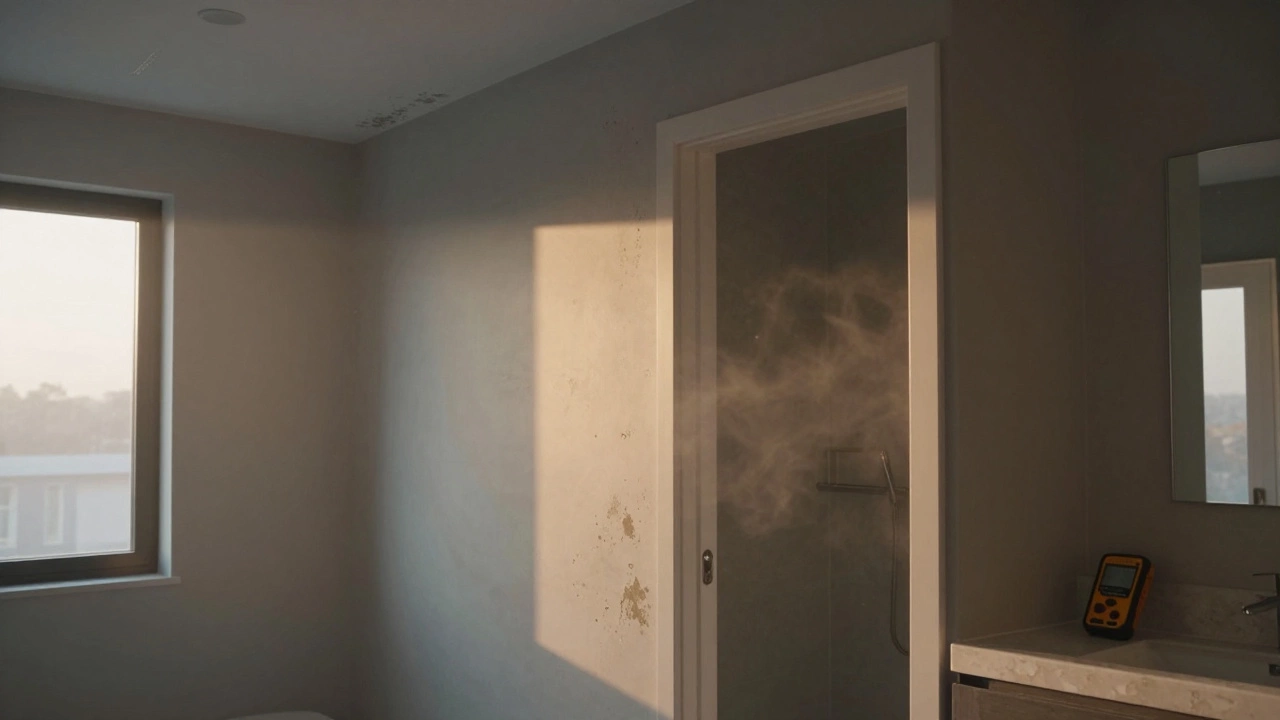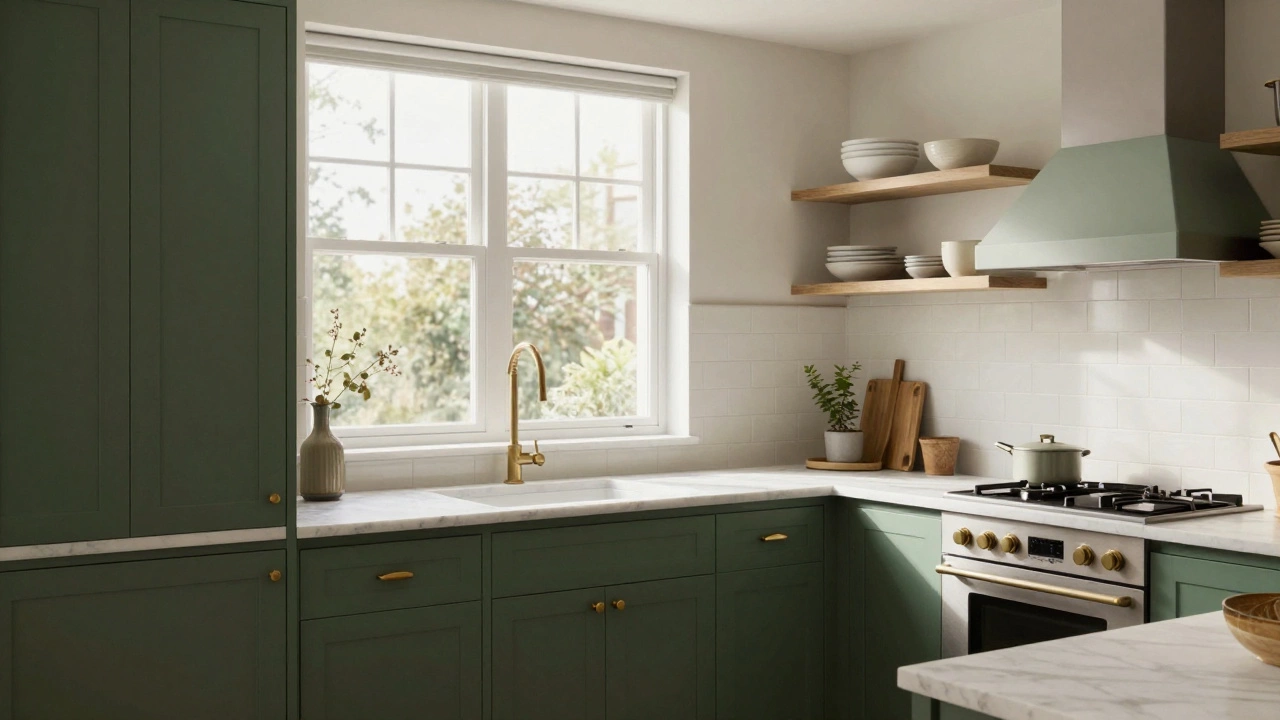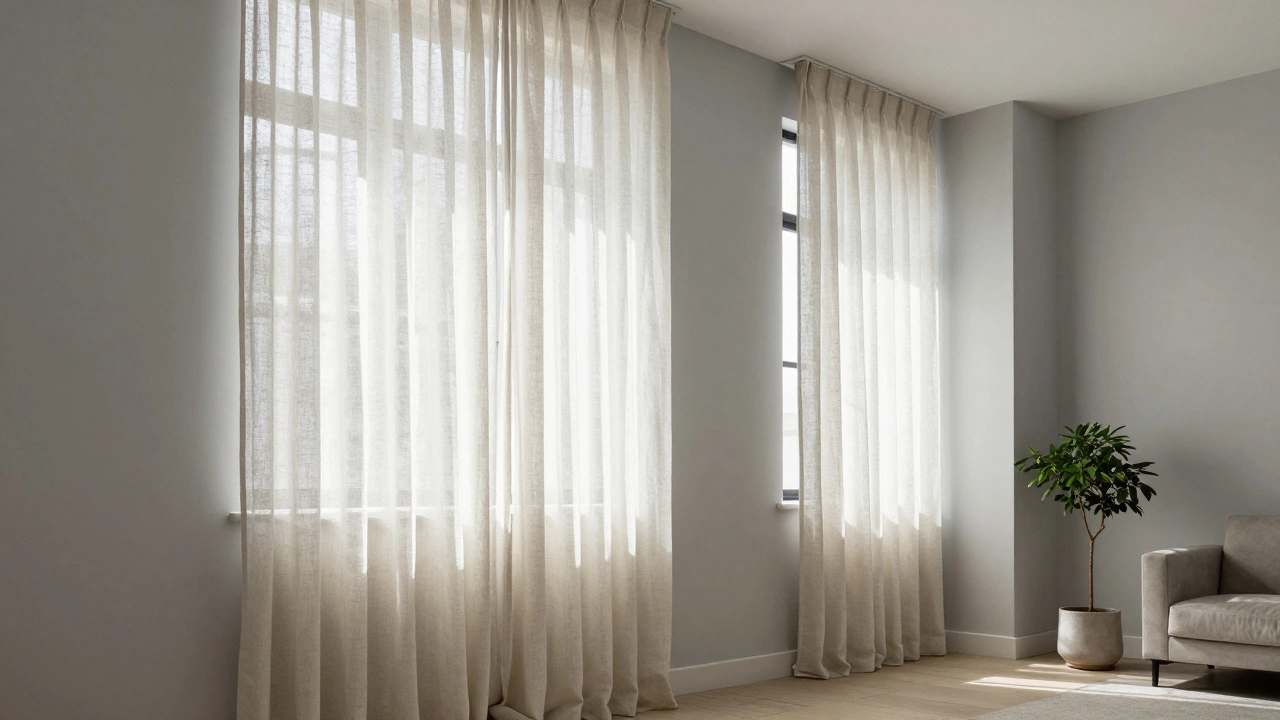Ever wondered which part of a home renovation can eat up the biggest chunk of your budget? It's usually the kitchen or bathroom. These spots are like the rock stars of home improvement, not just because they're essential but because of the level of detail and the specialists needed to make them shine.
Kitchens can be particularly challenging to renovate on a budget. Between the cabinets that seem to whisper 'solid wood only, please' and those shiny new appliances you really, really want, costs add up fast. Not to mention, there’s the latest must-have granite or quartz countertops. These things are like the designer jeans of the home world—everyone wants them, and they come at a premium.
Bathrooms aren't far behind in the cost race either. Think custom tile work, new plumbing, and those sleek vanities with 'soft-close' features – fancy, right? But, making your bathroom feel like a spa retreat easily tacks on extra bucks because quality fixtures and finishes usually don't come cheap.
The Kitchen Conundrum
So, why is the kitchen often the most expensive part of a home renovation? It's like walking into a menu of choices where everything sounds delicious but costs a small fortune. The main culprits? Cabinets, countertops, and appliances.
Kitchen remodel costs can range anywhere from a modest $20,000 to a staggering $100,000. Yeah, that's a big leap, but it really depends on how committed you are to that chef's dream kitchen. And let's not forget, labor is a significant chunk of that bill because precision is key when fitting all those pieces together.
First up, cabinets. They're the backbone of your kitchen's look and functionality. The high-end options are crafted from hardwoods and feature custom designs, but even basic, well-constructed cabinets have a hefty price tag. Expect to spend around 30-50% of your kitchen budget here.
Next, countertops. Popular materials like granite, marble, and quartz can burn a hole in your wallet faster than you can say 'pass the salt.' These materials are favored not just for their look, but for durability. Homeowners typically shell out thousands here, with prices ranging from $2,000 to upwards of $5,000 for top-notch options.
Then, there's the heart of the operation: appliances. High-tech features like smart fridges and induction cooktops elevate both the functionality and the cost of your kitchen. A full set of new appliances can easily run between $5,000 and $15,000, especially if you're tilting toward professional-grade brands.
Feel overwhelmed by the potential price tags? Keep these tips in your toolbelt:
- Prioritize your upgrades and decide which features matter most to your lifestyle.
- Consider mid-range options that look high-end but don't carry the hefty price tag.
- Shop around for deals, especially on appliances. You might find last year's model that'll suit your needs just fine.
So yeah, designing your dream kitchen is like constructing a gourmet meal—takes careful planning, quality ingredients, and sometimes you gotta be ready to wait for a good sale on that killer ingredient.
Bathroom Break Down
Bathrooms can really empty your wallet if you're not careful. The mix of plumbing, lighting, and luxury finishes can spiral costs sky-high before you even realize it. Most folks underestimate how these elements rack up costs fast.
First off, let's talk about plumbing. Switching up your bathroom layout? Get ready for that bill, because anything involving pipes usually means calling in the pros. They make it look easy, but trust me, it's not a DIY job. And each little fixture change can add up.
Then there’s the allure of high-end finishes. From marble countertops to intricate tile patterns, these luxuries can make a small space feel like a retreat. But, quality comes at a price. As interior designer Sarah Richardson says,
"A well-designed bathroom should be a functional sanctuary, which often involves balancing budget constraints with personal taste."That's why so many people find themselves splurging where they didn't intend to.
Lighting is another sneaky expense. You might think you only need a single overhead light, but many modern bathrooms now sport layered lighting. Wall sconces, LED mirrors, and ambient settings add a touch of elegance but be sure to factor these costs in early.
One thing you might find interesting is how these costs stack up across different elements. Here's a quick peek:
| Feature | Average Cost |
|---|---|
| Plumbing Updates | $2,500 - $5,000 |
| Custom Tile | $1,000 - $3,000 |
| Lighting | $500 - $1,500 |
| Vanity Installation | $800 - $2,000 |
So, when planning for a bathroom renovation, it’s smart to budget more than you initially expect. Decisions seem simple early on, but when you’re in the thick of choosing between sleek faucets and heated floors, you’ll wish you padded your budget!
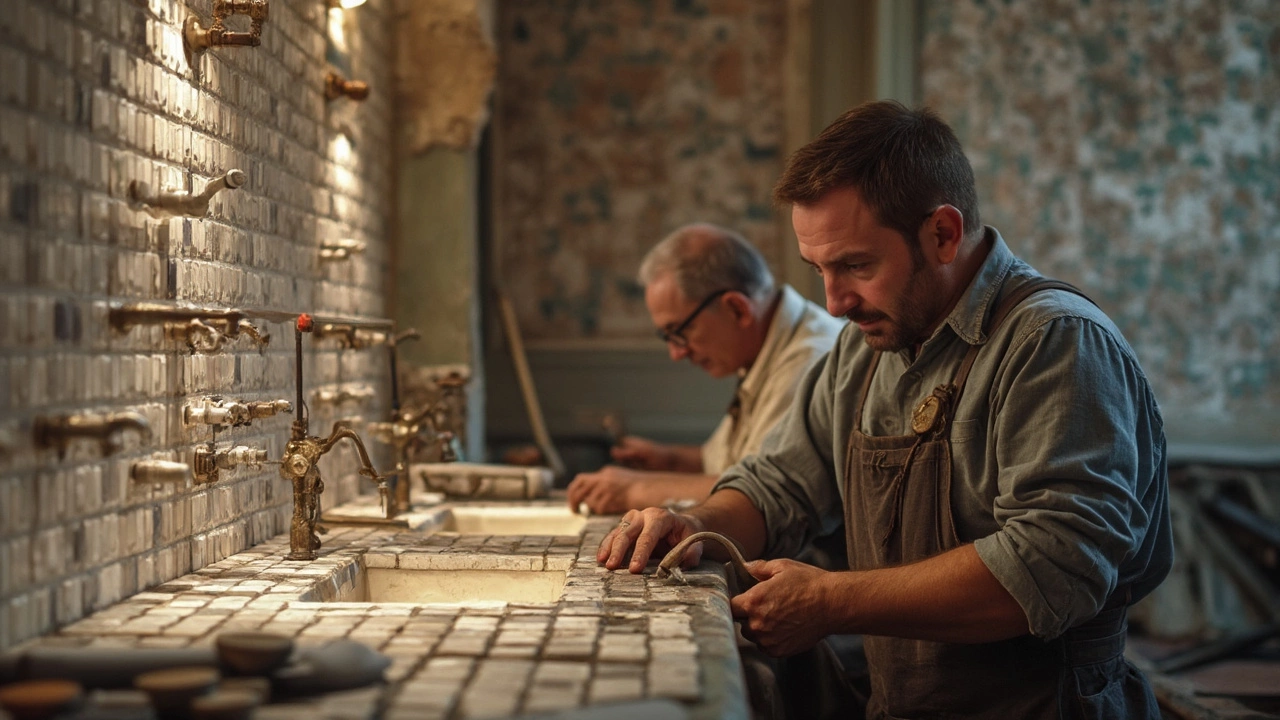
Structural Surprises
When you're in the thick of home renovation, nothing is more nerve-wracking than discovering structural surprises. Imagine this: your contractor pulls back some drywall and, boom, hidden issues galore! It's like opening a surprise box you never asked for—and the treasures usually demand a big chunk of your budget.
Structural changes are often a wildcard because they tend to reveal the unexpected. You might encounter problems like outdated wiring, old plumbing systems, or even foundational cracks. Each of these can open a can of worms that goes beyond your original plan.
Take wiring, for instance. Older homes might have electrical systems that don’t meet today's safety standards, meaning you’re looking at a full rewire. It’s not just costly; it's essential for safety. Plumbing’s another biggie; galvanized pipes from decades ago can corrode and cause water pressure issues. Replacing these with modern options like PEX or copper can save you headaches down the road.
Foundational issues are the kings of nasty surprises—no one wants to hear about a crack in the foundation. These are typically the most expensive to address because they threaten the structural integrity of your home.
- Tip 1: Always set aside a contingency fund that could cover around 10-15% of your total budget for these types of surprises.
- Tip 2: Before diving into a home renovation, get a comprehensive inspection. It can reveal potential problems and save you from heartbreak (and wallet ache) later.
Here's a quick look at what some of these repairs might cost:
| Type of Repair | Estimated Cost |
|---|---|
| Rewiring Electrical System | $3,000 - $15,000 |
| Replacing Plumbing Pipes | $4,000 - $10,000 |
| Foundation Repairs | $5,000 - $40,000 |
Tackling these costly surprises head-on not only keeps your house safe but also ensures it stands strong for years. That way, your home renovation adds true value without spiraling out of control financially.
Budgeting Blunders
When it comes to home renovation, one of the easiest ways to let costs spiral out of control is by skipping the planning phase. Diving into renovations without a detailed budget is kind of like going grocery shopping hungry—you're likely to spend way more than you intended. But don't worry, with a bit of foresight, you can keep those costs in check.
The first rule of thumb is to do your homework. Get a handle on what typical prices are for kitchen remodels or bathroom renovations. Research similar projects in your area and set realistic expectations. Did you know, on average, a mid-range kitchen remodel can run you north of $25,000 according to recent data? Knowing these numbers helps you decide where to spend and where to save.
Another common mistake is not factoring in surprise costs. Unforeseen issues can be like those surprise pop quizzes you never liked in school. Always, and I mean always, set aside some cash—like 10-20% of your budget—for unexpected setbacks. Trust me, you don’t want to be the person who ends up without doorknobs because all the money went into fixing hidden plumbing 'surprises.'
Let's not forget the power of prioritizing. Make a list of must-haves and nice-to-haves. This way, if push comes to shove, you know what you can let go of without turning your dream project into a nightmare.
Speaking of priorities, breaking down costs into categories can give you a clearer picture of where your money is going. Here's a useful breakdown of typical renovation costs:
| Category | Percentage of Budget |
|---|---|
| Labor | 30-35% |
| Materials | 20-25% |
| New Appliances or Fixtures | 10-15% |
| Architects/Designers | 15-20% |
| Permits and Fees | 5-10% |
Remember, the goal is to stay informed and prepared. Budgeting shouldn't feel like a chore; think of it as a way to bring your vision to life without the stress of hidden costs lurking around the corner. Smart budgeting is your best friend in avoiding those blunders.


